NIKKISO CULTURE
2023/02/28
Nikkiso Arts and Culture Sponsorship Activities: For the Preservation and Promotion of Kaga Inlay
- Kaga-inlay
- Interview
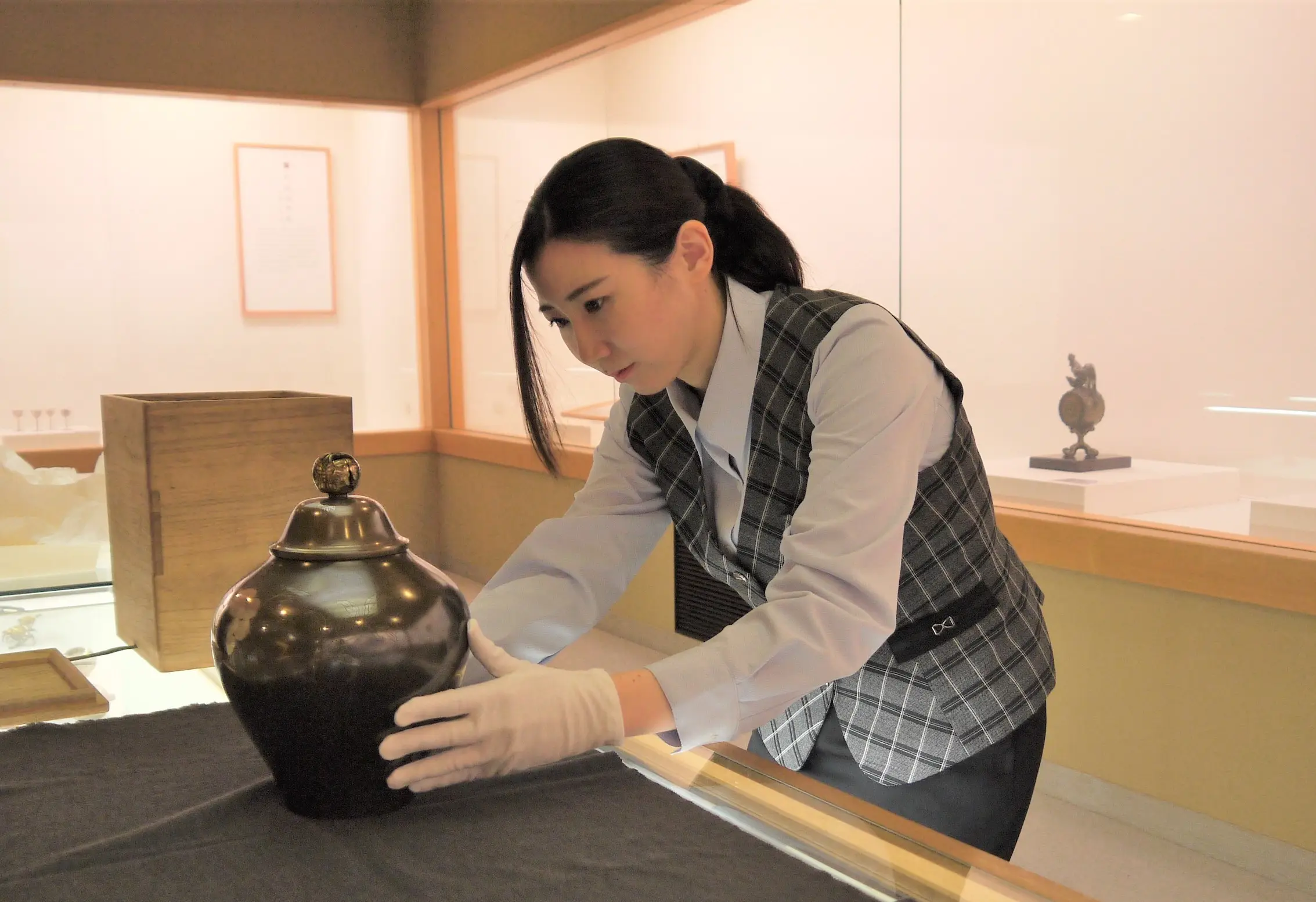
Index
As a manufacturer of a wide variety of products, including hemodialysis machines, specialized pumps, and aircraft parts, Nikkiso believes that coexistence and co-prosperity with local communities are essential, and as a member of society, has therefore been involved in a variety of community outreach activities.
One of these efforts is our sponsorship of Soukeikai, which is engaged in preservation, promotion, and education activities for Kaga Inlay, a traditional craft from Ishikawa Prefecture.
In this article, we interviewed Ms. Noriko Nakata and Ms. Saki Yamaguchi, both of whom are involved in managing Soukeikai, which serves to preserve and promote Kaga Inlay at the Kanazawa Plant in Ishikawa Prefecture. Under the theme of arts and culture sponsorship activities, we talked about specific activities and what Nikkiso prioritizes as part of them.
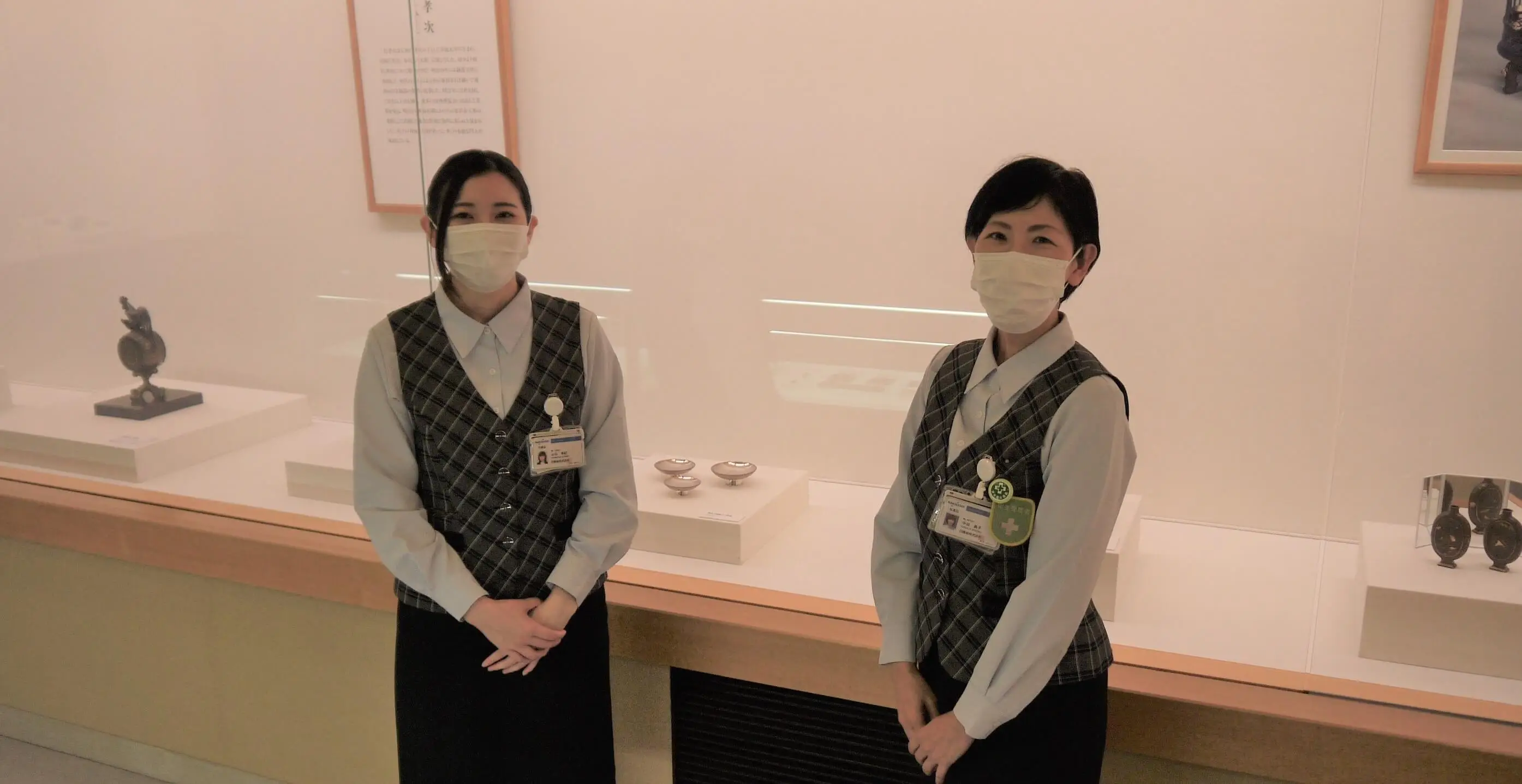 Saki Yamaguchi (left) and Noriko Nakata (right)
Saki Yamaguchi (left) and Noriko Nakata (right)
Noriko Nakata: As General Manager, General Affairs Department and Duputy General Manager for the Kanazawa Plant, she is in charge of general affairs related work and safety and health management for the entire plant. As the Executive Director of Soukeikai, she has long played a role in activities to preserve and promote Kaga Inlay, a traditional craft from Ishikawa Prefecture, as well as in the management of the Foundation that leads these activities. Saki Yamaguchi: Along with her responsibility for a wide range of tasks in the General Affairs Department at the Kanazawa Plant, including general affairs, visitor services at the plant, and cafeteria management, she is also in charge of guiding visitors at the Soukeikai Hall as a curator, and for managing Soukeikai. |
"We want to protect those traditional crafts from the region that have been handed down from generation to generation"
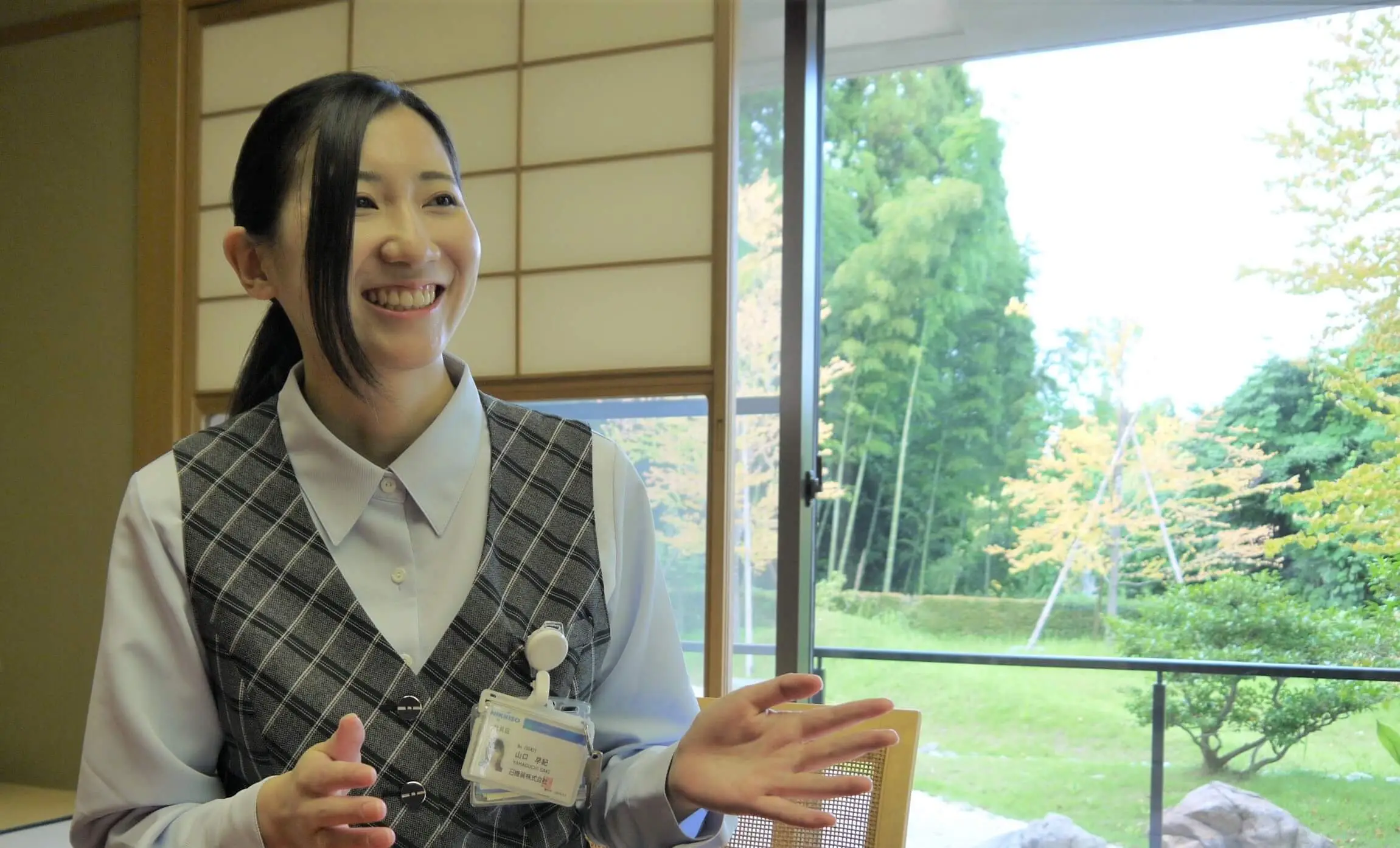
--We would like to speak with you on the theme of Nikkiso's support for preserving and promoting Kaga Inlay as part of its efforts regarding the arts and culture. First, could you provide an explanation of Kaga Inlay?
Yamaguchi: As a traditional craft from Ishikawa, Kaga Inlay is a decorative technique whereby the artisan engraves a metal with a pattern, into which he or she embeds another metal by tapping. This technique is believed to have developed during the Edo period when the head of the Maeda Clan, the feudal lord of the Kaga Domain, supported its crafts.
Extremely sophisticated techniques are required for each process, including those for engraving delicate patterns into hard metals and for widening the base of the grooves into a trapezoidal shape to prevent the embedded metal from coming off. Another very attractive aspect of Kaga Inlay seems to be that the delicate decorations offer broad potential for expression, as well as the height of the artisan’s skill required to apply these decorations.
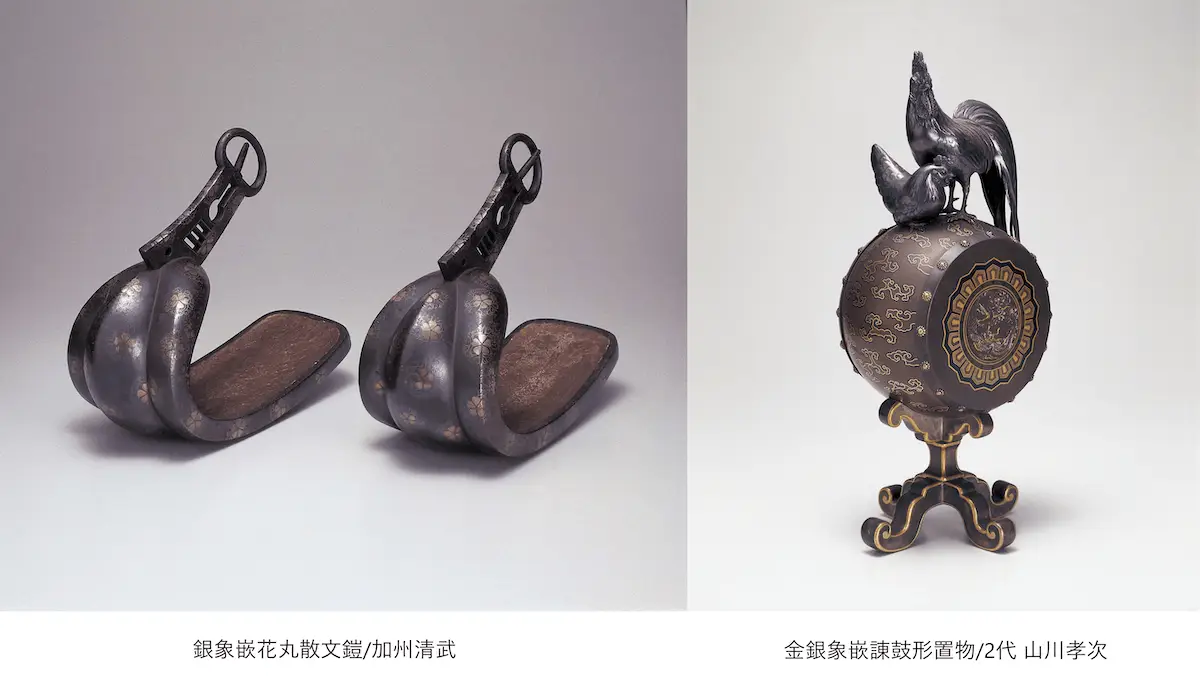 left:Twin Stirrups with Flower Pattern, Kaga Domain Kiyotake, right: Rooster on a Drum, Yamakawa Koji Ⅱ
left:Twin Stirrups with Flower Pattern, Kaga Domain Kiyotake, right: Rooster on a Drum, Yamakawa Koji Ⅱ
--What kinds of works are created using the Kaga Inlay technique?
Yamaguchi: Originally, this technique was used to decorate the stirrups that support the legs when riding a horse and Japanese sword guards, but in the Meiji period, the technique came into use for making flower vases and other items for overseas export in response to the trend of encouraging new industries.
Today, works made using this technique mainly include obi clasps, accessories, ornaments, and flower vases, for example.
--Tell us about how Nikkiso came to sponsor the preservation and promotion of such a historic metal craft?
Yamaguchi: A the founder of Nikkiso, Keijiro Oto was from the Koji Yamakawa line, a distinguished family of Kaga Inlay artisans. I have heard that when Mr. Oto saw that the number of artisans who worked with Kaga Inlay had diminished to the point where they could be counted on one hand, he felt a sense of crisis that this traditional craft, which he also considered his roots and which had been passed down from generation to generation, would disappear forever.
In sparing no effort to promote and develop Kaga Inlay, when the Kanazawa Plant was constructed in 1993, he erected the Soukeikai Hall along with the Nikkiso product showroom on the grounds as a commemorative hall to exhibit Kaga Inlay works, metal engraving tools, and patterns. At the same time, he launched the Soukeikai Foundation and began sponsorship activities.
The four pillars for supporting the preservation and promotion of Kaga Inlay: Preserving traditional crafts for future generations
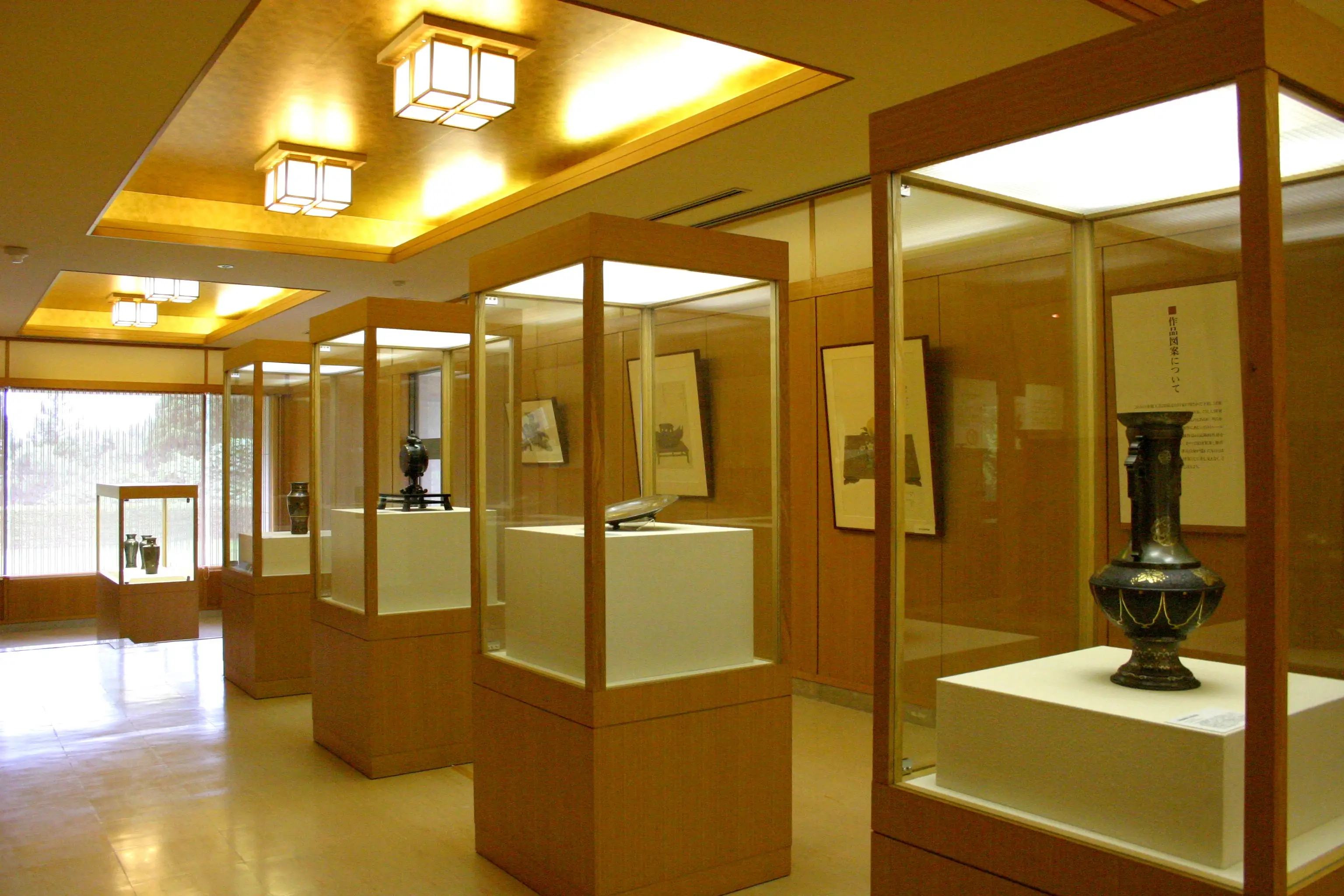
--Please tell us about the specific activities Soukeikai conducts to support the preservation and promotion of Kaga Inlay.
Yamaguchi: We conduct activities in the following four areas.
- Preserving and fostering Kaga Inlay
- Promoting and publicizing Kaga Inlay
- Training successors for Kaga Inlay
- Providing grants for skill acquisition and research, and incentives to present works
To begin with, in regard to preserving and fostering Kaga Inlay, we focus on collecting works and materials. While we naturally collect works of historical value centered on those created by Koji Yamakawa from Keijiro Oto’s family line, we also purchase, store, and manage works by young artists with the intent of providing support.
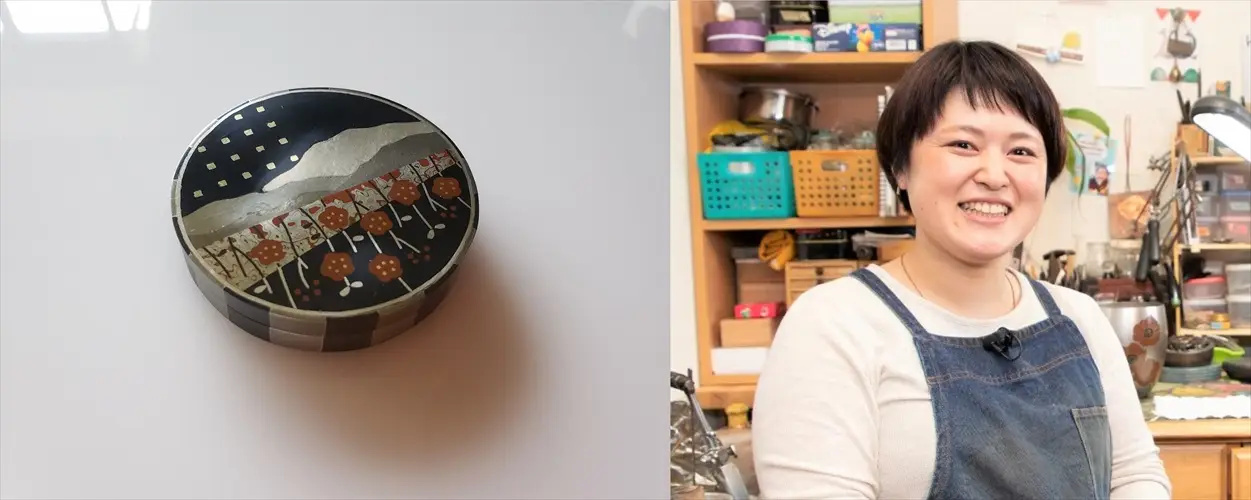 “Shunshoku Kougenashi” inlaid incense burner (left) and Machiko Maeda (right)
“Shunshoku Kougenashi” inlaid incense burner (left) and Machiko Maeda (right)
The image above shows a work that we actually purchased from Machiko Maeda, a young artist.
This inlaid incense burner titled “Shunshoku Kougenashi” is decorated using Kaga Inlay in the motif of the beautiful spring scenery of Kanazawa.
Works by contemporary artists use the traditional Kaga Inlay technique, yet express the artists’ unique sensibilities through form and design, for example. And many accessories and other small ornaments have been produced in a way that blends in with modern lifestyles
--Tell us about your promotion and publicity activities.
Yamaguchi: We have unfortunately had to scale back our activities in recent years due to COVID-19, but during normal times, we have held events such as hands-on classes at nearby elementary schools and the Soukeikai Hall to provide those from the local community with opportunities to experience Kaga Inlay.
As part of these hands-on classes, the instructor engrave the patterns ahead of time based on designs presented by the participants. The participants then experience the rest of the process, from embedding the metal into the patterns to polishing the surface. To tell the truth, it is very difficult to embed the metal, so everyone has a hard time.
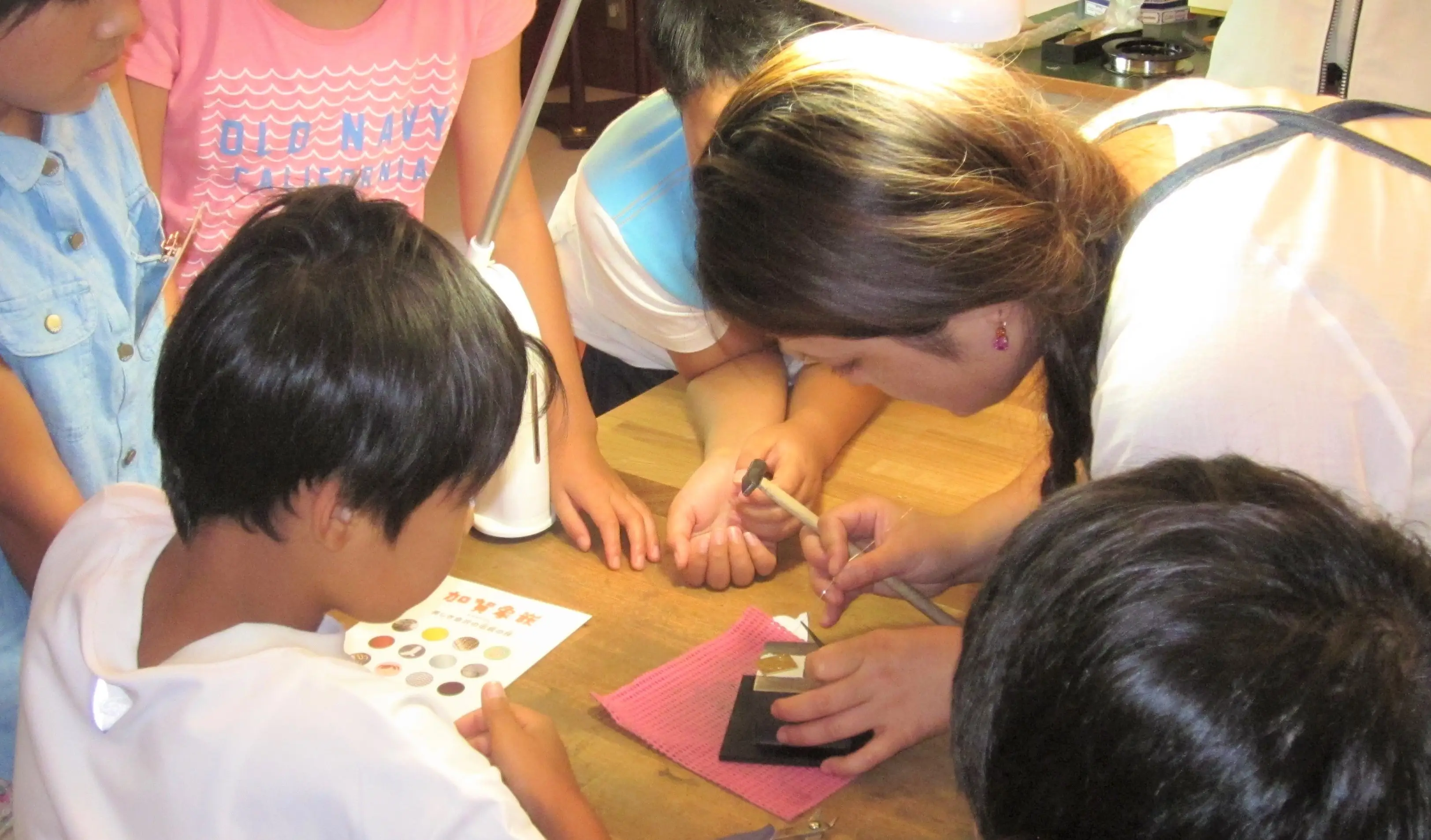
Nakata: As part of our promotion and publicity activities, we publish newsletters that communicate the appeal of crafts and metalwork, and calendars on the theme of Kaga Inlay works.
I think that learning about Kaga Inlay and actually experiencing how to create these objects makes it easier for people to understand the wonder of these works. And I hope people throughout the community will become familiar with Kaga Inlay and other forms of metalwork.
--Please tell us more about your efforts to train successors.
Yamaguchi: As commissioned by Kanazawa City, we have continuously organized a series of courses for the general public titled Kaga Inlay and Metal Engraving since 1998. We offer three courses depending on the participant’s skill level, namely the Basic Course and Specialist Course I and II. During the series, participants study the Kaga Inlay technique once a week for two years at each level, for up to six years.
The ages of the students range broadly from younger generations to those who have reached retirement age, with participants coming from a wide range of backgrounds, including regular company employees and craft artisans from other fields. After completing this series of courses, some graduates are working as Kaga Inlay artists, and even accepted at nationwide public exhibitions.
Nakata: Tomoko Misaki is also a graduate of this course. She is currently active as a Kaga Inlay artist.
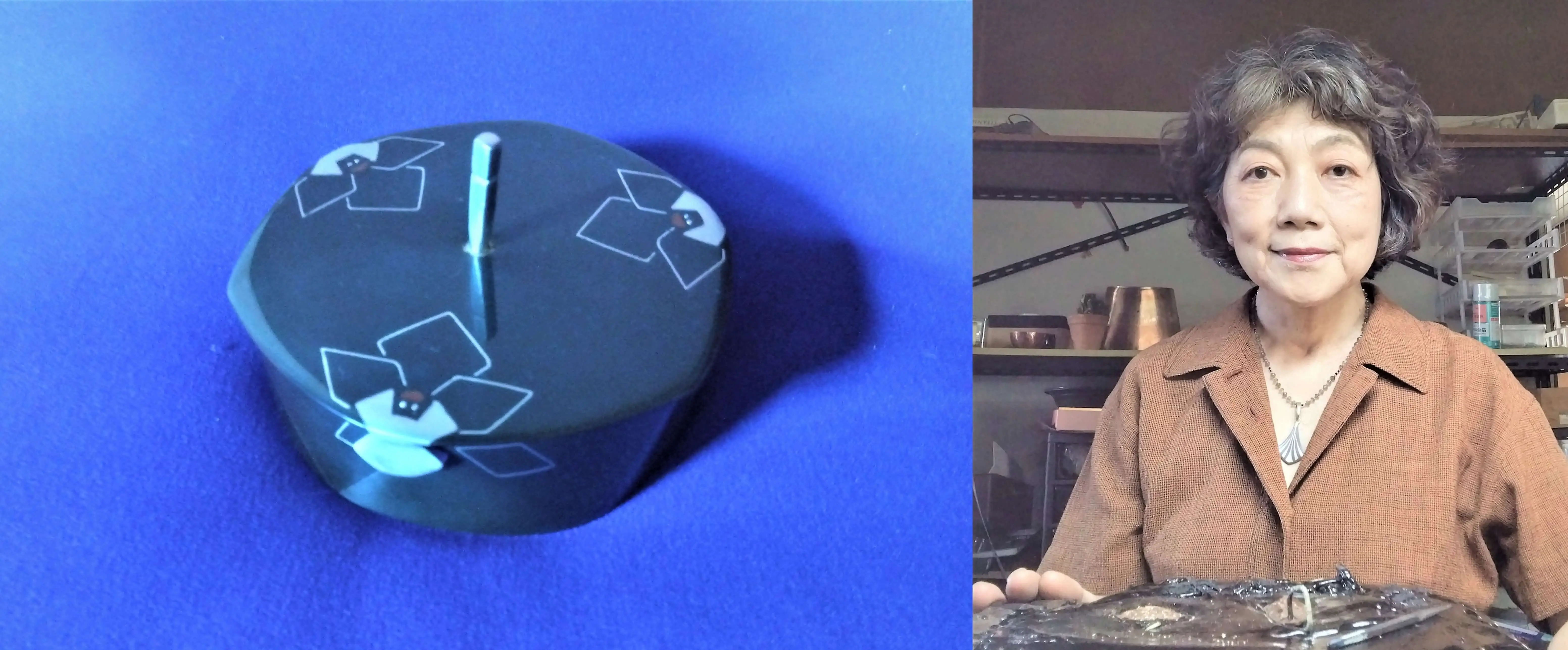 “Ranka” (Orchid) jointed inlay confectionery box (left), Tomoko Misaki (right)
“Ranka” (Orchid) jointed inlay confectionery box (left), Tomoko Misaki (right)
Nakata: And in order to ensure that those promising youths who will take responsibility for the future of Kaga Inlay set down firm roots in the local area, we renovated and improved a vacant house near the Kanazawa Plant and opened the Tsukiura Workshop. We have also provided work spaces for young artists.
So far, 11 young artists from the Tsukiura Workshop have ventured out on their own, and are currently active in their own workshops.
--Lastly, we would like to ask you about grants for skill acquisition and research, and incentives to present works.
Yamaguchi: As part of the grant project, selection committee members from Soukeikai award the Soukeikai Grand Prize and Soukeikai Award for Effort to those metalwork artists who have made great achievements during the year, and present these along with financial incentives.
In terms of incentivizing the presentation of works, we established the Soukeikai Award as part of two public exhibitions, namely the Traditional Crafts Japan Metalworks Exhibition and the Kanazawa City Crafts Exhibition, to commend those who have produced excellent examples of metalwork.
Aiming for coexistence and co-prosperity with local communities
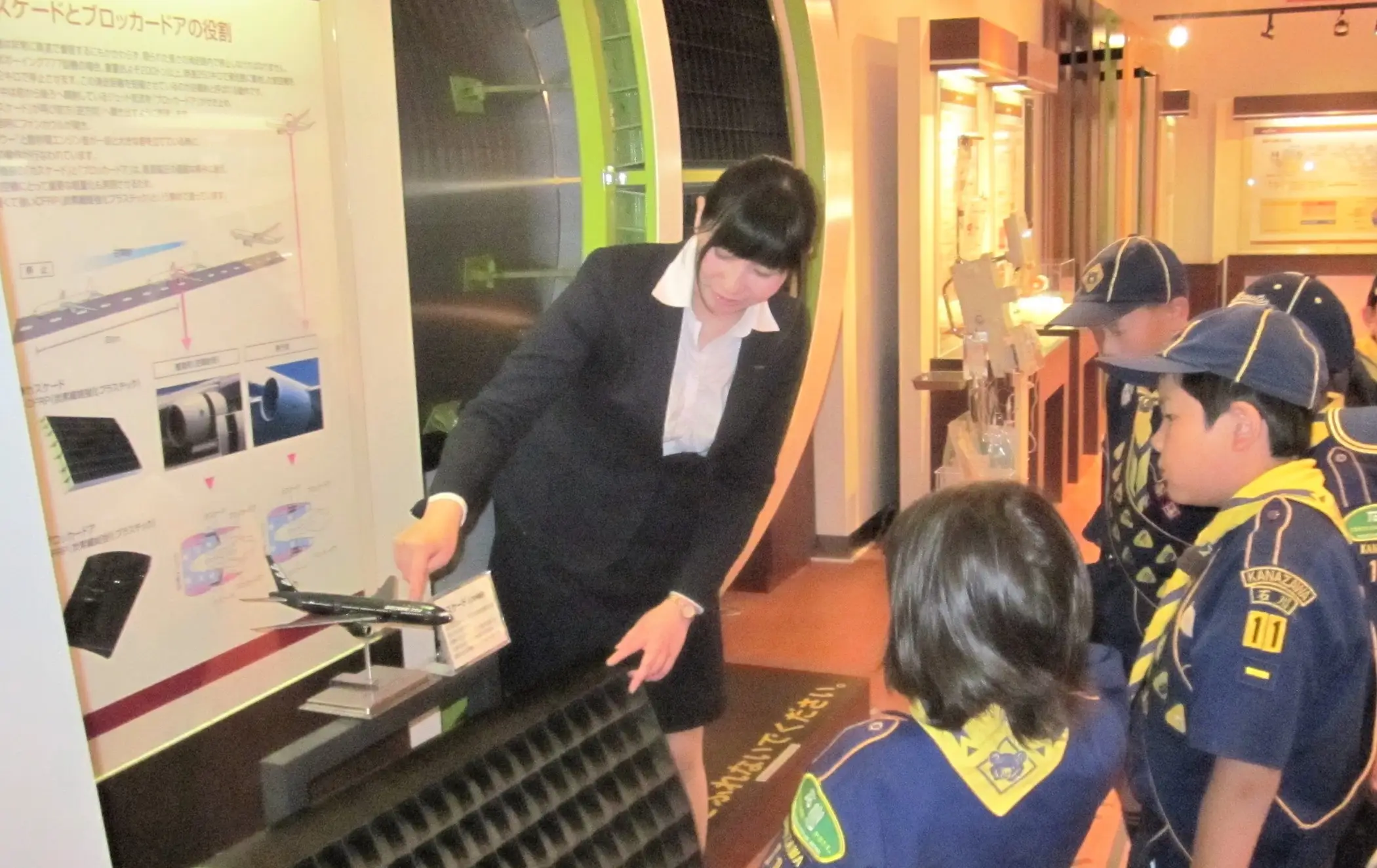
--What do you see as particularly important in terms of activities to help preserve and promote Kaga Inlay?
Yamaguchi: Certainly the connection with the community. We consciously communicate with those who do not have the opportunity to interact with Nikkiso and our products on a regular basis, and so focus on managing events like hands-on classes. And Soukeikai Hall does more than just serve as an exhibition space for Kaga Inlay, namely by opening the showrooms used to promote Nikkiso products to the public for free.
During these events and at these exhibitions, we have received comments about how surprised visitors are that this kind of company is in Kanazawa and at our various efforts. So, I think that these have become a good opportunity for people to understand Nikkiso’s efforts in the two areas of manufacturing activities and arts and culture activities.
--Why does Nikkiso value its connections with the community?
Nakata: When Nikkiso first came to Kanazawa here, the local people hardly knew about us.
But there is no question that it is local companies that earn the trust of local communities. And in order for us to attract more talented human resources and to engage in manufacturing that is rooted in the local community into the future, I believe we must conduct activities that foster ties with the local community, and that create peace of mind and earn trust.
In particular, because Kanazawa, Ishikawa Prefecture places an emphasis on promoting culture, and because of the area’s relationship with our founder, we believe that our ability to contribute to the promotion of local traditional crafts also has significance from the perspective of strengthening local industries.
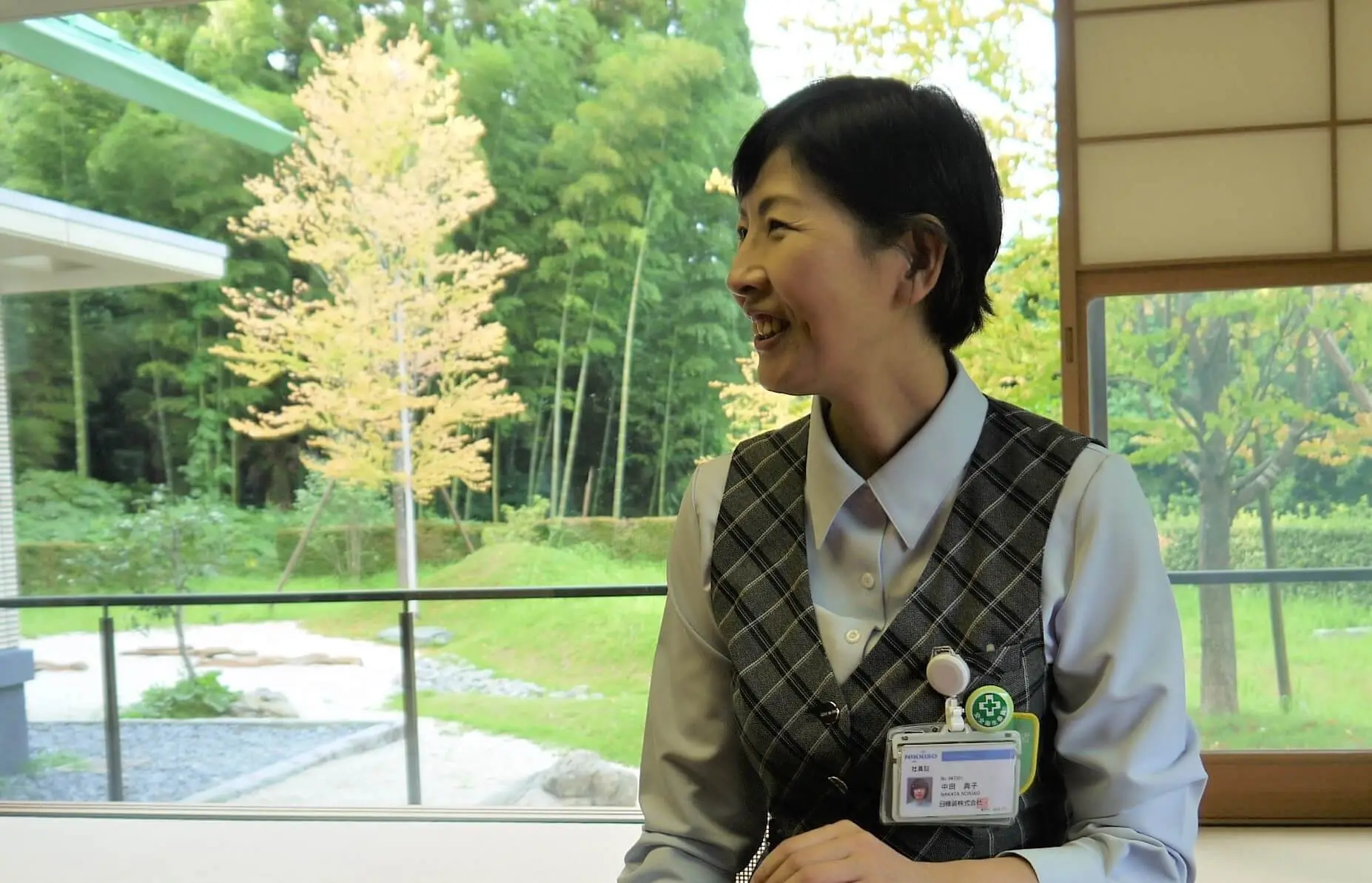
--Thank you. Lastly, please tell us what Nikkiso would like to achieve through Soukeikai’s activities and its ties with the local community.
Yamaguchi: I believe that increasing the number of people who understand and recognize the local culture and support the culture will lead to the "affluence" of the region.
So, I hope that through Soukeikai’s ongoing activities to promote the recognition of Kaga Inlay and increase the number of its successors, we can foster an understanding of traditional crafts and contribute to enriching Kanazawa, Ishikawa Prefecture.
Nakata: The tea ceremony culture took root in Kanazawa because it was home to a feudal lord, and this is precisely why there is a culture of ikebana (flower arrangement) for decorating the tea ceremony, which uses crafts such as flower vases...and why various aspects of culture have accumulated in countless layers.
The concepts and techniques that have been fostered in a region that has developed this kind of culture ought to be useful for business as well. And I believe that the spirit of Kaga Inlay craftsmanship with its carefully refined, elaborate techniques, is consistent with Nikkiso's basic stance of making a variety of products with sophisticated technologies.
With the significance of manufacturing, as well as of engaging in support for arts and culture activities, in this region in mind, we would like to connect these efforts to the future in a continuous manner.
Pickup
-
 MEDICAL FIELD
MEDICAL FIELD
Empowering Asia’s Expanding Dialysis Treatment with Nikkiso’s Advanced Technology and Comprehensive Support
- Hemodialysis
- Interview
- Medicalbusiness
2025/10/30
-
 MANUFACTURING
MANUFACTURING
Pumps also actively used in semiconductor manufacturing: 20 years of history of compact, high-speed canned motor pumps
- Technology
- Interview
- Pump
- Semiconductor
2025/05/21
-
 MANUFACTURING
MANUFACTURING
Nikkiso's DX initiatives: CAE Support Department continues to evolve, aiming to eliminate dependence on the skills and expertise of specific people
- Technology
- Interview
2025/04/09
関連記事
-
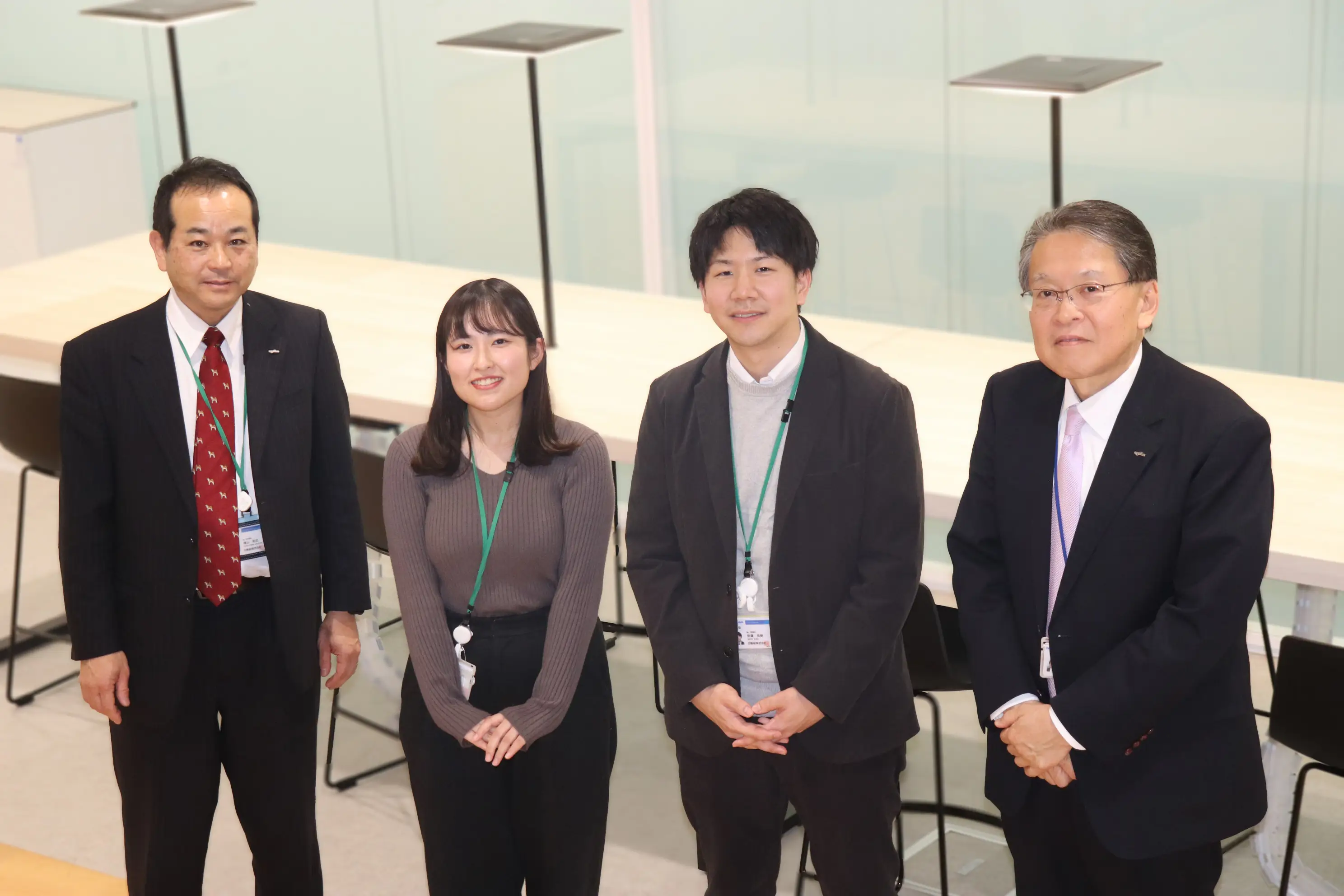 NIKKISO CULTURE
NIKKISO CULTURE
The Nikkiso Institute of Research and Technology tackles research and technological development which transcends business boundaries and takes on the challenge of creating innovation
- Interview
- Technology
2024/12/27
-
![Reflections on Nikkiso’s 70th anniversary [#2 Venturing into the medical and aviation fields]](/media/grOL3JbxeQ2KWMz1v6Qq5s8pQkF5F2t4YdLbyvaq.jpeg) NIKKISO CULTURE
NIKKISO CULTURE
Reflections on Nikkiso’s 70th anniversary [#2 Venturing into the medical and aviation fields]
- Medicalbusiness
- Aerospace
- foundingstory
2023/12/20
-
![Reflections on Nikkiso’s 70th anniversary [# 1 How it all started]](/media/nx5fObpsRg3bMeP9mciCBF6GSehox5TwxvBGaHrW.jpeg) NIKKISO CULTURE
NIKKISO CULTURE
Reflections on Nikkiso’s 70th anniversary [# 1 How it all started]
- Industrial
- foundingstory
- Pump
2023/12/14
-
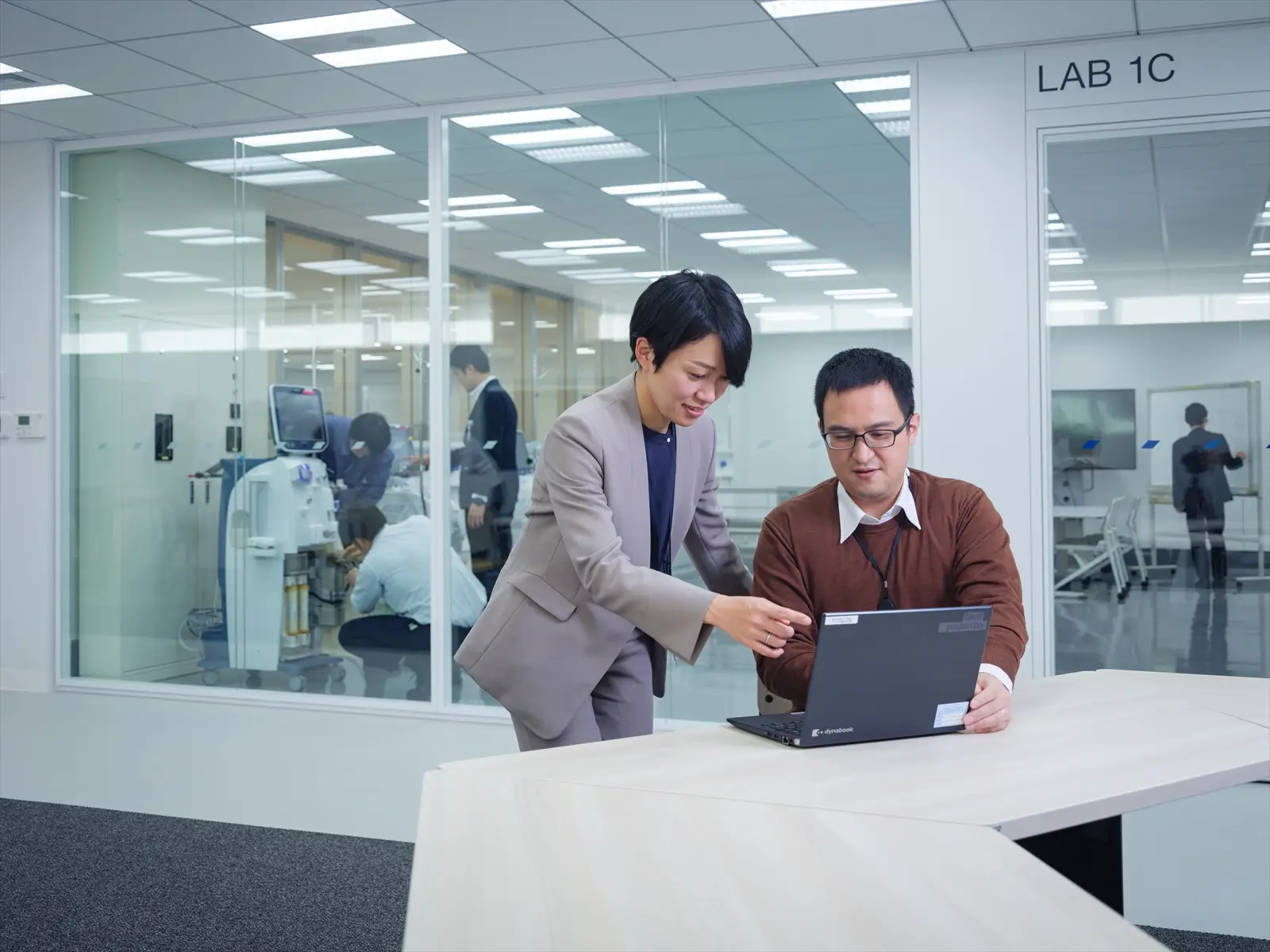 NIKKISO CULTURE
NIKKISO CULTURE
Creating even more Nikkiso innovations with the establishment of the Medical Technology Center
- Interview
- Technology
- Hemodialysis
- Medicalbusiness
2023/11/07





